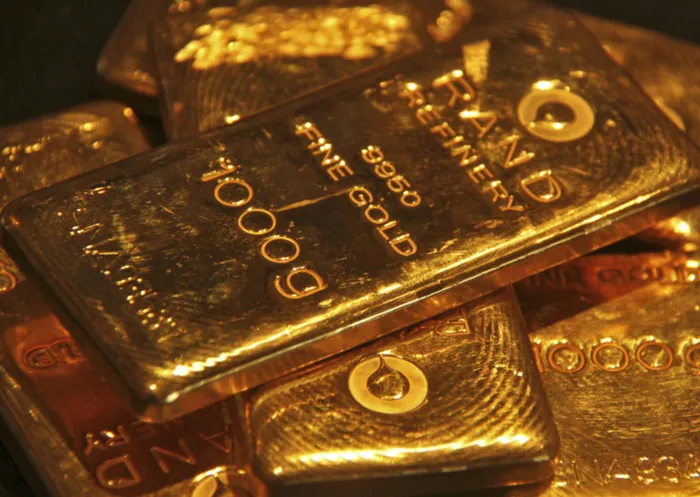Gold falls off 6-1/2 month peak

Gold prices retreated as the dollar strengthened but the metal was underpinned near the 6-1/2 month high it hit earlier on Wednesday after the Bank of Japan became the latest central bank to announce a fresh round of bullion-friendly monetary easing.
The metal climbed sharply last week after the Federal Reserve unveiled a third round of quantitative easing - money printing to buy bonds - following a European Central Bank pledge to launch a new bond-buying programme earlier in the month.
Further monetary easing is expected to maintain pressure on long-term interest rates, keeping the opportunity cost of holding gold at rock bottom, as well as boosting liquidity, pressuring the dollar and fuelling long-term inflation concerns.
Spot gold was down 0.2 percent at $1,767.49 an ounce at 14:39 SA time, while US gold futures for December delivery were down $1.50 an ounce at $1,769.70. Earlier, spot prices rose as high as $1,779.10, their strongest since February 29.
“Current monetary easing by central banks is warranted by weak economic growth and subdued inflationary pressures in developed economies,” BNP Paribas analyst Anne-Laure Tremblay said.
“This trend is likely to continue until we see a notable improvement in economic growth trends.”
“It seems that the stars are now aligned for gold to move higher,” she said. “The next hurdle to overcome will be the $1,800 an ounce level, which we expect to be breached decisively in the fourth quarter.”
Gold prices erased gains as the euro fell against the dollar, with traders citing talk of European banks selling the currency and investors taking profits on its earlier gains versus the yen.
The dollar held onto gains after data showed US housing starts rose by less than expected last month.
Interest in gold exchange-traded funds - popular investment vehicles for bullion which issue securities backed by physical metal - has been strong this week, with gold ETF holdings rising to an all-time high at 73.681 million ounces.
ETFs including New York's SPDR Gold Trust and products operated by ETF Securities and Zurich Cantonalbank added 925,000 ounces of metal to their holdings on Monday alone, Reuters data showed.
'FISCAL CLIFF' EYED
Gold's ability to extend its rise back towards last year's record highs at $1,920.30 an ounce will depend largely on how the US economy develops, analysts said.
“What will probably be just as important as QE3 is what happens with this fiscal cliff,” Natixis analyst Nic Brown said, referring to the arrival of automatic year-end spending cuts and tax rises in the United States.
“In 2011, the peak in gold prices was related to the inability of Congress to raise the debt ceiling. It wasn't just QE that was pushing it, but the perceived deterioration in the US fiscal position.”
“If the market gets it into its head that the US has a problem just like Europe, gold prices could push significantly higher. That will ultimately be the determining factor.”
Among other precious metals, silver was down 1.2 percent at $34.37 an ounce, while spot palladium was up 0.6 percent at $667 an ounce.
Spot platinum was up 0.6 percent at $1,627.74 an ounce. Output concerns resurfaced in major producer South Africa after police fired tear gas at a crowd of protesters in a township near a mine owned by Anglo American Platinum near Rustenburg.
The metal posted its biggest one-day fall since March on Tuesday after striking miners at number three platinum producer Lonmin said they had reached a pay deal and would return to work after six weeks of violent labour unrest at the company's Marikana mine, during which 45 people were killed. - Reuters